see all jobs
Upended forest, water bottle whale and Japanese foot spa feature as Winter Stations open in Toronto
Torontonians have flocked to the city’s beach in record numbers to experience the unveiling of eight brand new Winter Stations installations along the shoreline of Lake Ontario.
The creators of the attractions, who were chosen in a design competition, were tasked with designing “playful” structures – based around the beaches’ lifeguard stations – capable of drawing people into the chilly outdoors to interact with the icy environment.
The installations include an upended forest, a Japanese-inspired foot spa, a whale constructed out of empty water bottles and a collage of mirrored buoys.
All eight installations are exhibited along Kew, Scarborough and Balmy Beaches in the heart of Toronto’s Beach community, broadly located south of Queen Street East, between Woodbine and Victoria Park Avenues. They will remain in place until 27 March.
The theme of the programme is ‘Catalyst’, and the judges selected submissions that open up the waterfront landscape and reinvent the space for visitors – with thought put into how materials may be re-purposed or reused in future iterations.
"It's thrilling for the founders to see the city truly embrace Winter Stations,” said Ted Merrick, Winter Stations co-founder. “The anticipation for this year's stations was matched by the enthusiasm of everyone who has turned out. This competition has taken on a life of its own and we are excited to see where it goes next.”
The eight designs, explained by their creators
I See You Ashiyu by Asuka Kono and Rachel Salmela from Toronto, Canada
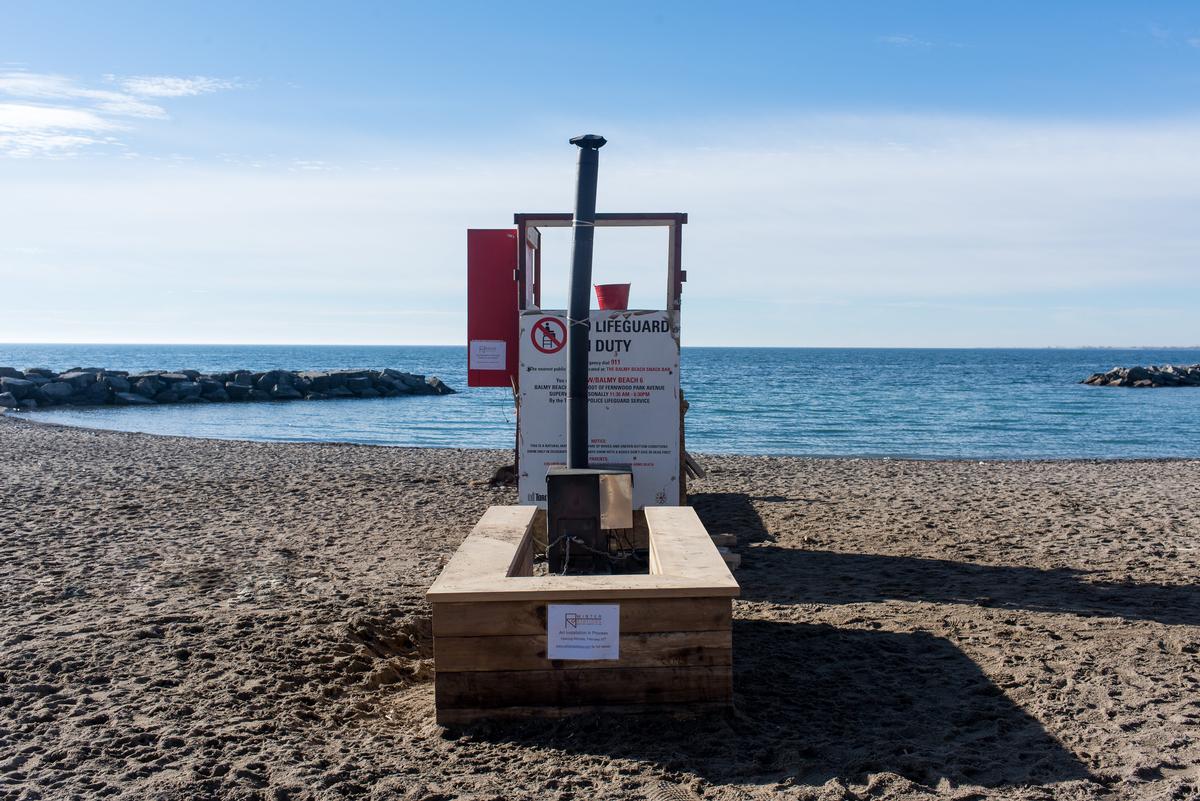
This installation uses the idea the Japanese hot spring and warm water to provide physical relief from the cold. By creating a landscape-based gathering space on the beach, this installation emphasises the contrast in the seasons and recalls memories of a summer beach.
North by Studio PERCH from Montreal, Canada
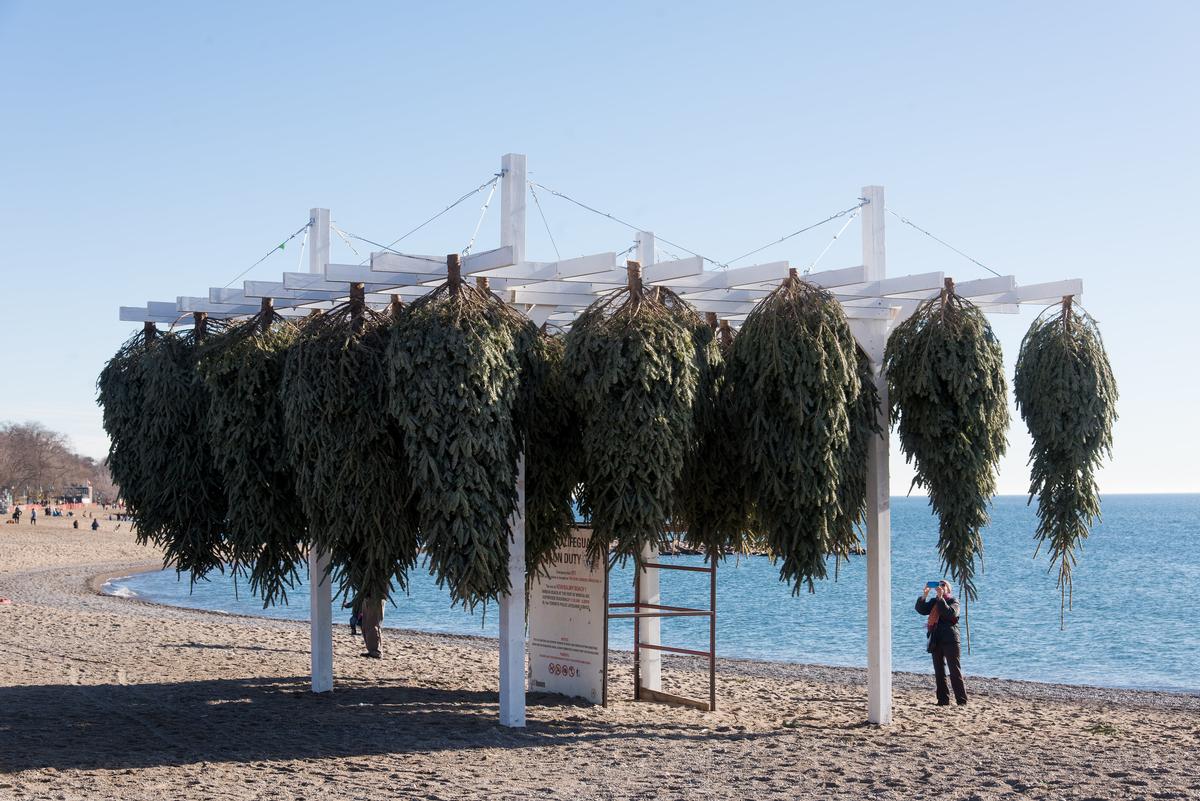
Using the poetic concept of the great 'North', this installation conjures a powerful and eternal image that transports visitors to an imagined forest. The work suspends 41 fir trees in mid-air, creating an evocative and colour-saturated canopy that stands out against the white of winter.
Collective Memory by Mario García from Barcelona, Spain and Andrea Govi from Milan, Italy
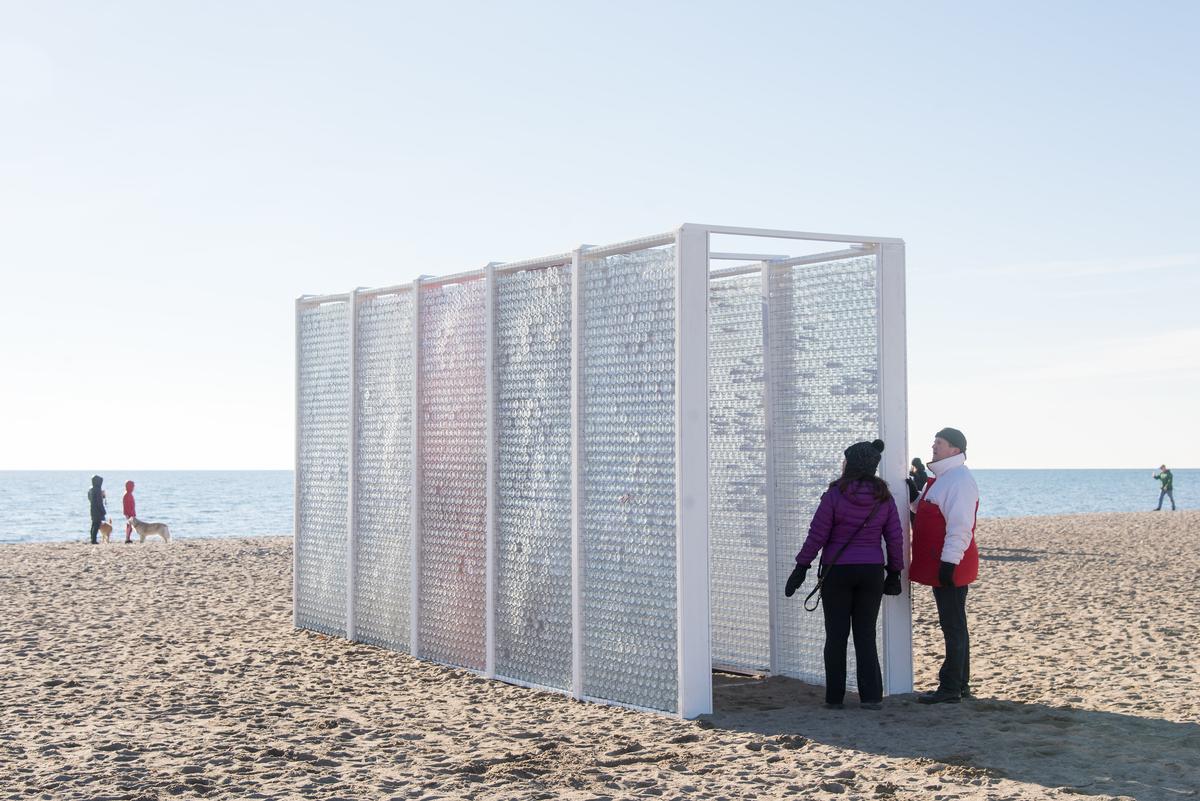
Inspired by the statistic that by 2031 nearly one-half of the Canadian population over the age of 15 will be foreign-born or the child of a migrant parent, Collective Memory aims to be the catalyst of present and shared anecdotes. Constructed out of recycled bottles – the archetype for the lost message – two translucent walls will shield the existing lifeguard structure, creating a threshold between shore and city.
BuoyBuoyBuoy by Dionisios Vriniotis, Rob Shostak, Dakota Wares-Tani and Julie Forand from Toronto, Canada

Capturing the impression of a series of buoys moving in the waves, BuoyBuoyBuoy uses many small parts to create a whole. Each component is the silhouette of a buoy from afar creating a fog or a cloud around the lifeguard station like drops reflecting and refracting the light.
The Beacon by Joao Araujo Sousa and Joanna Correia Silva from Porto, Portugal
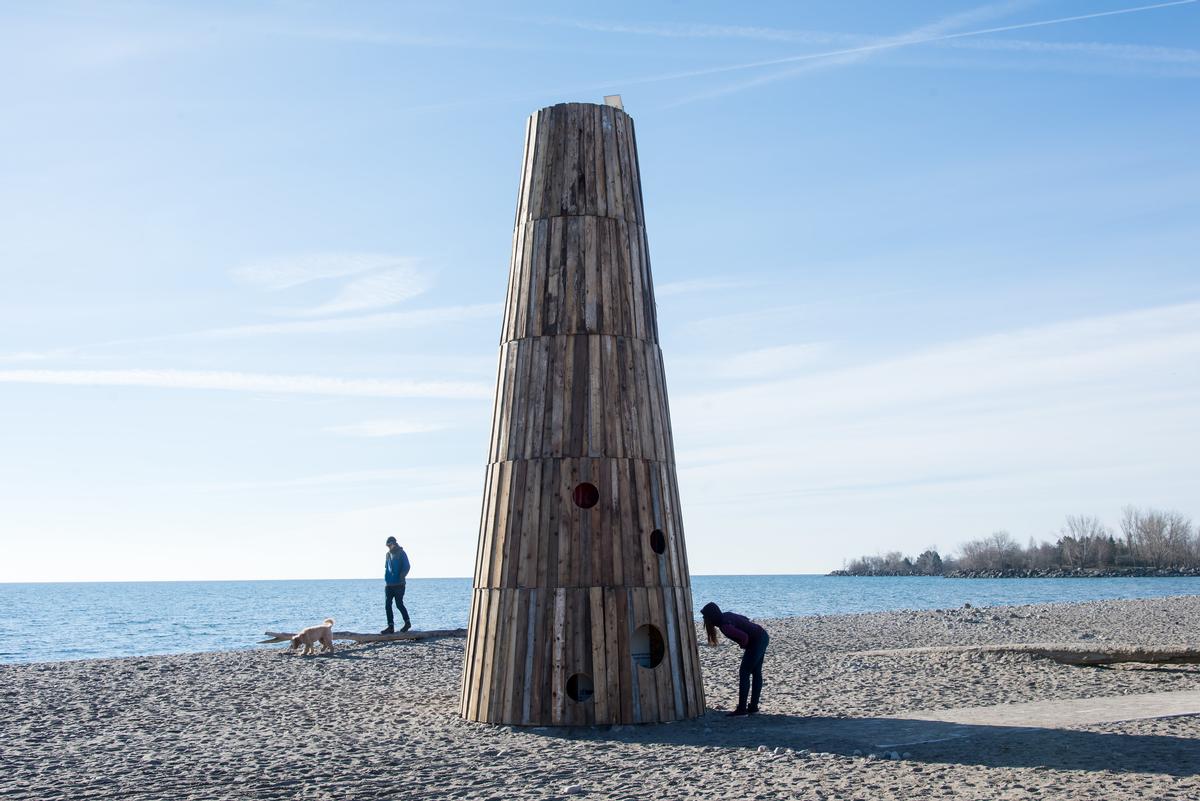
The concept translates into the archetypical lighthouse conical shape, reduced to its simplest expression and conformed to the lifeguard stand proportions and wrapped in aged wood. The Beacon will act as a temporary drop-off location for non-perishable items such as canned food or clothes.
Flotsam and Jetsam by University of Waterloo, Ontario

As visitors approach from the vantage of the city the 20ft high sculpture generates curiosity and invites a closer look. The installation reveals the realities of plastic consumption, resulting waste and its effects on the aquatic biodiversity of the planet we share.
Aurora by Humber College School of Media Studies & IT, School of Applied Technology, Toronto, Ontario
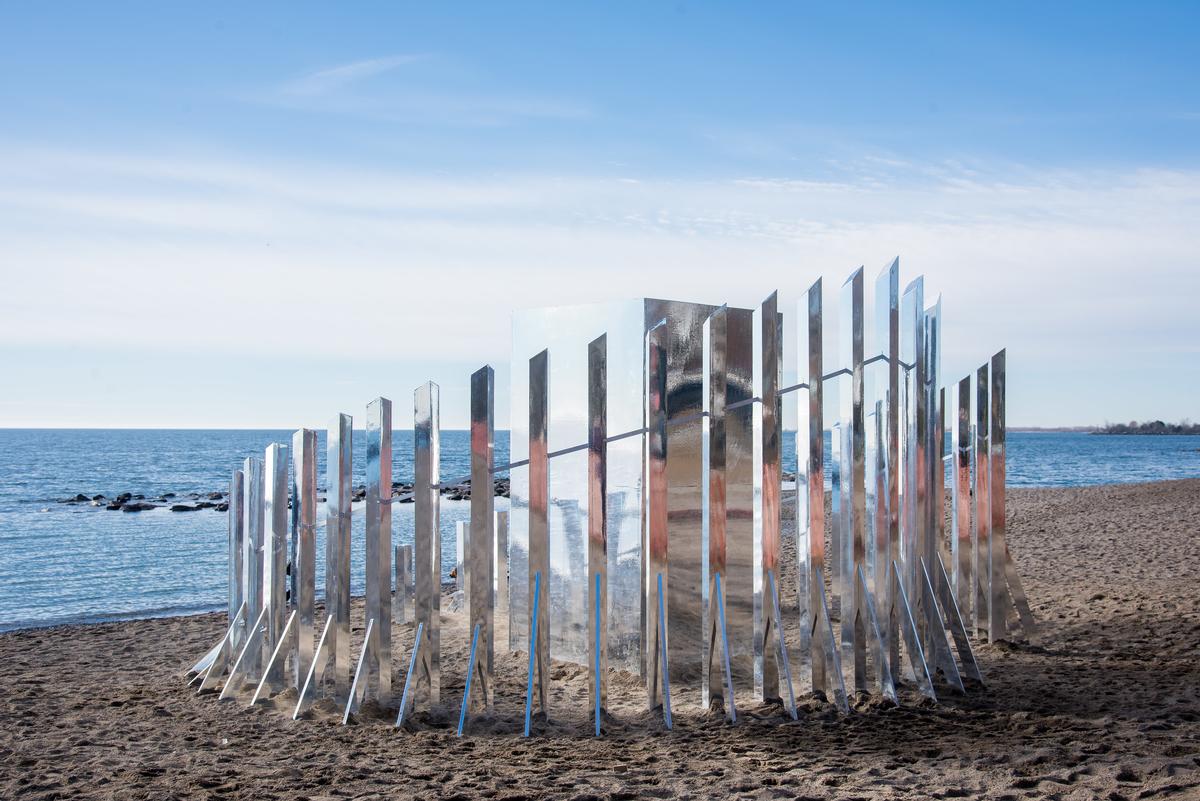
From afar, the structure is incognito, reflecting the surrounding environment and fading into it. Entering the space, the explorer views misconstrued, mirroring illustrations of themselves and their surroundings.
Midwinter Fire by Daniels Faculty of architecture, Landscape, and Design at the University of Toronto, Ontario
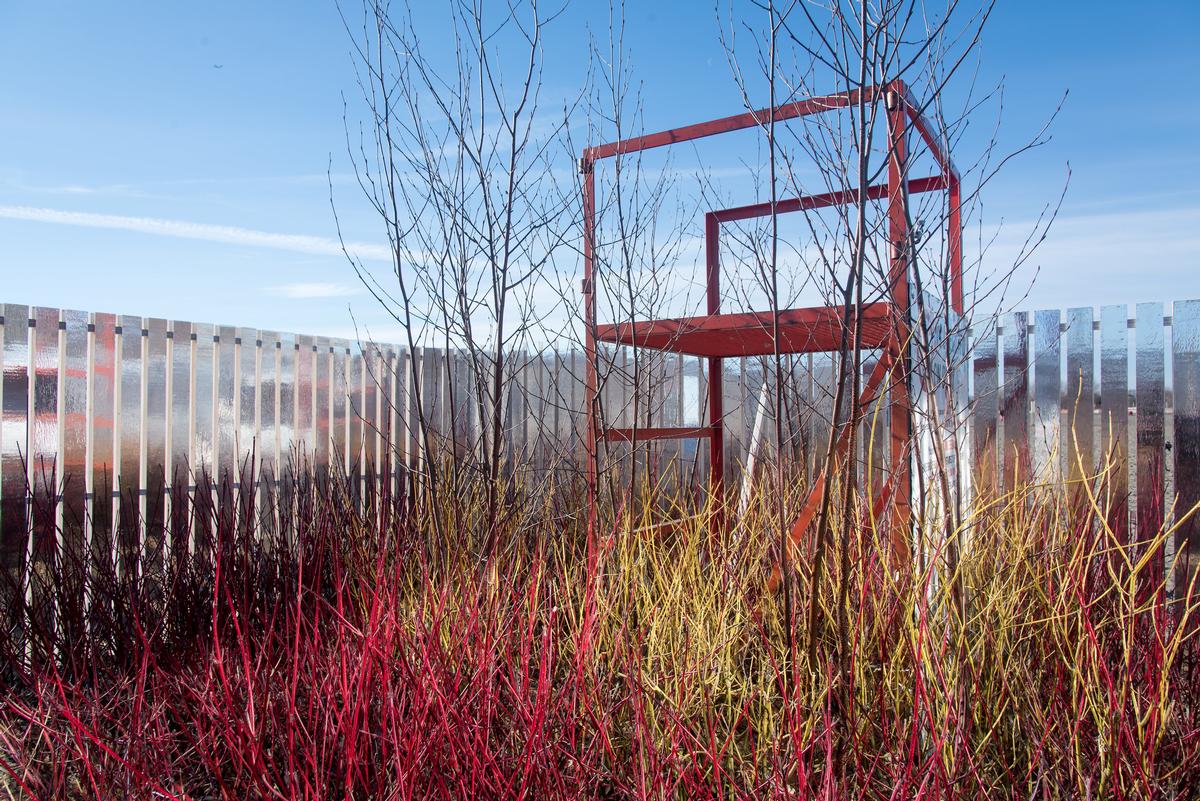
Midwinter Fire provides visitors with the opportunity to engage with an augmented winter forest creating an immersive experience that reframes Southern Ontario’s vegetation in contrast with the exposed winter landscape of the beach. This installation uses the simple idea of reflectivity to expand the illusion of an urban forest and to make the project disappear into the surrounding landscape.
More News
- News by sector (all)
- All news
- Fitness
- Personal trainer
- Sport
- Spa
- Swimming
- Hospitality
- Entertainment & Gaming
- Commercial Leisure
- Property
- Architecture
- Design
- Tourism
- Travel
- Attractions
- Theme & Water Parks
- Arts & Culture
- Heritage & Museums
- Parks & Countryside
- Sales & Marketing
- Public Sector
- Training
- People
- Executive
- Apprenticeships
- Suppliers















































